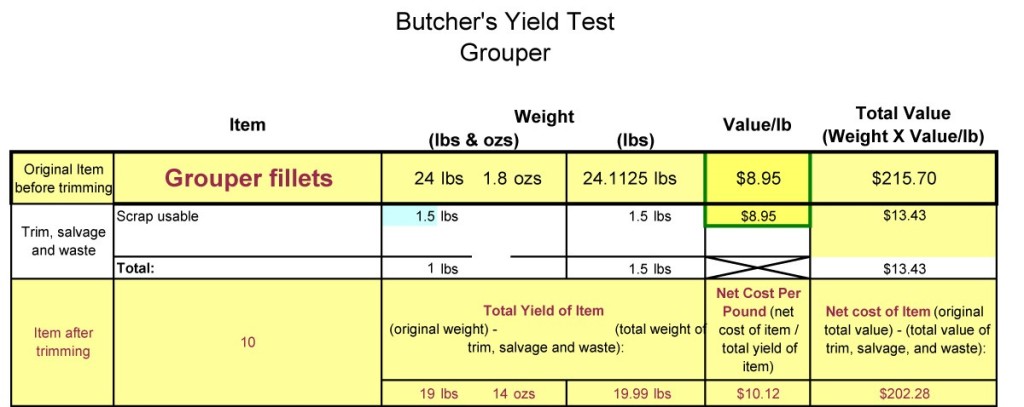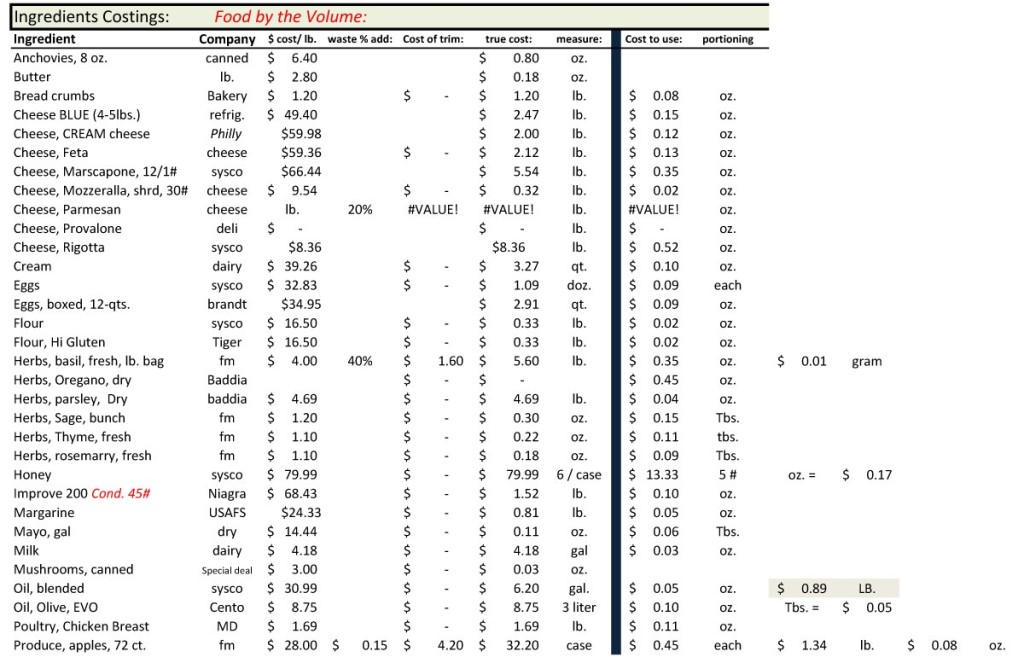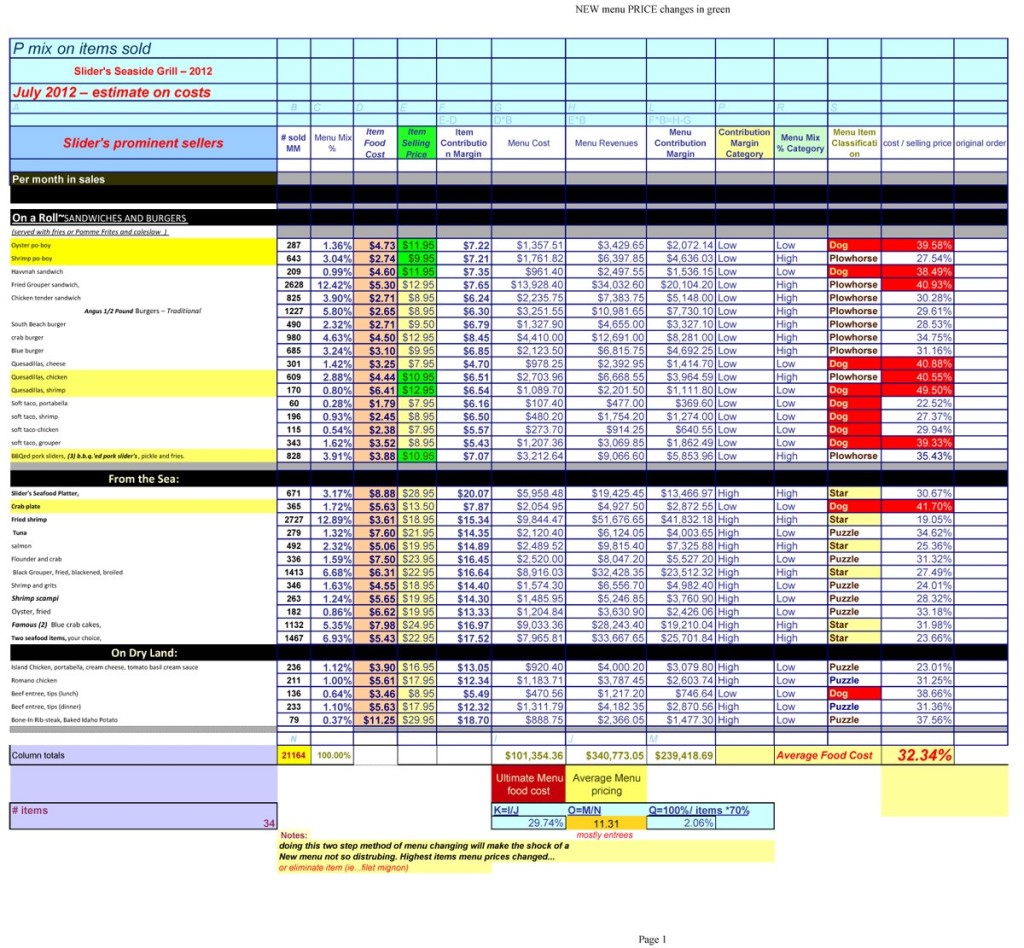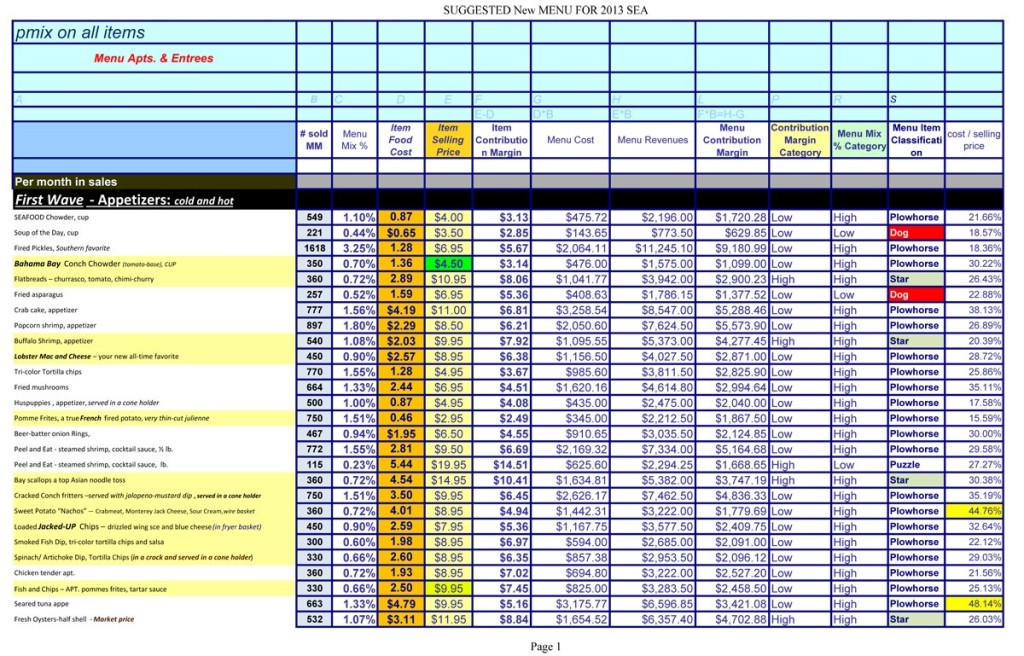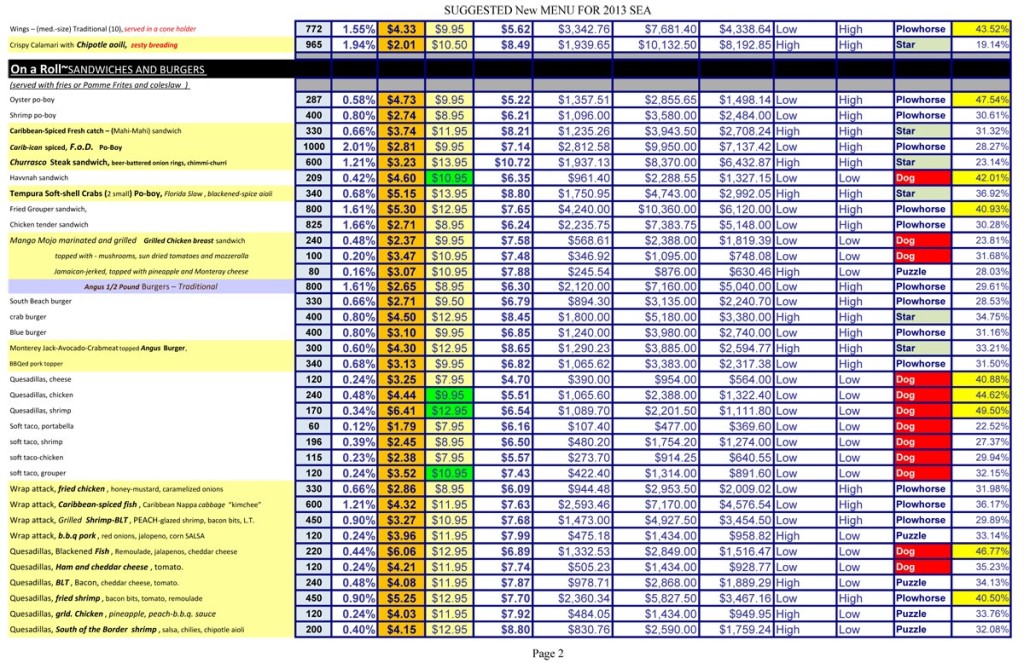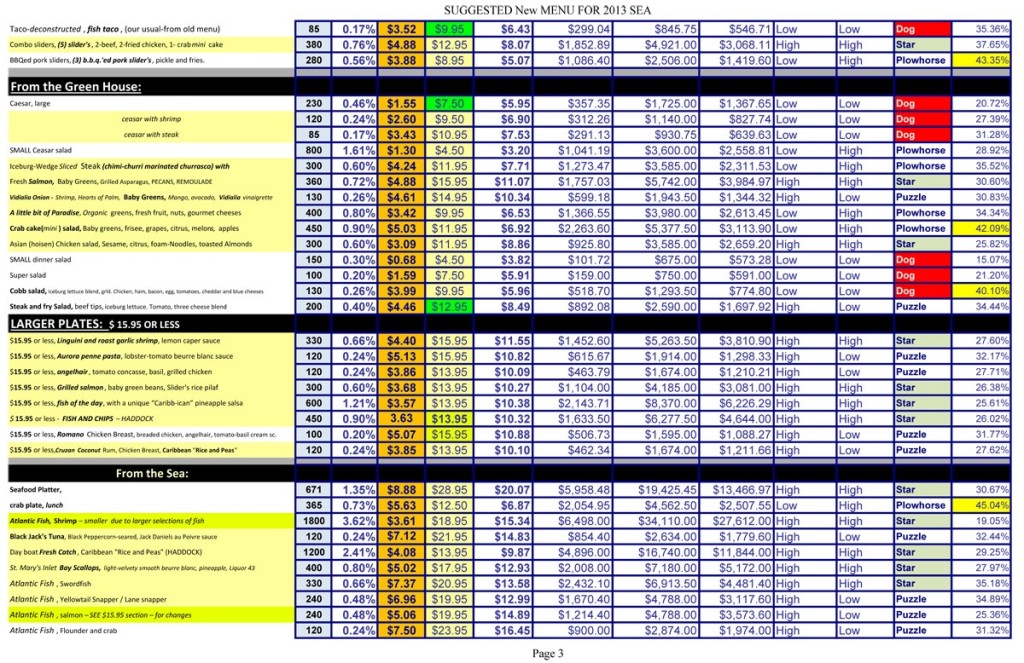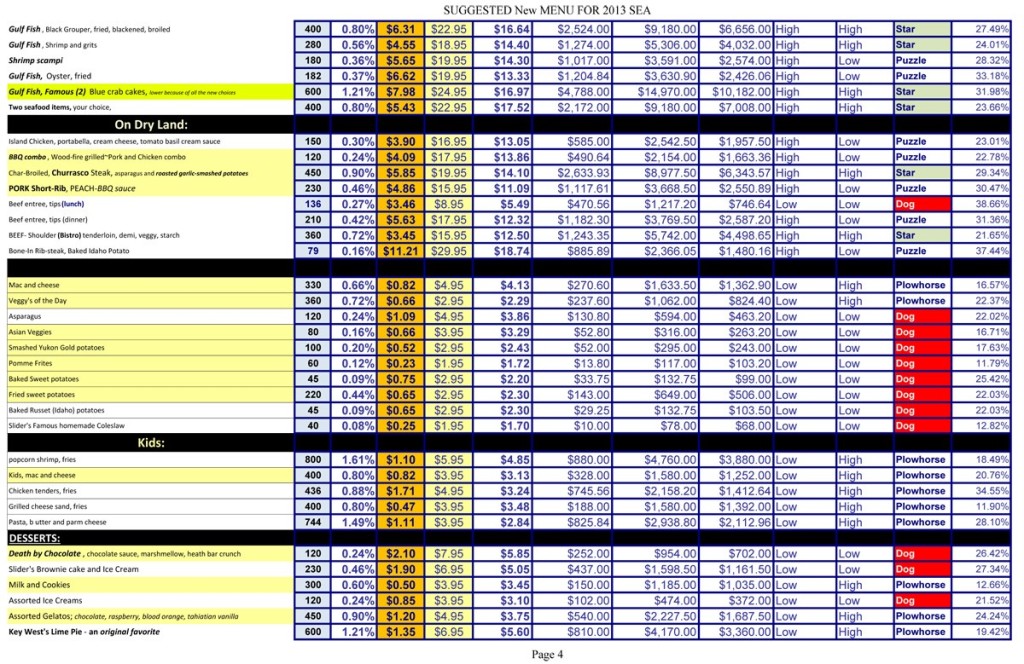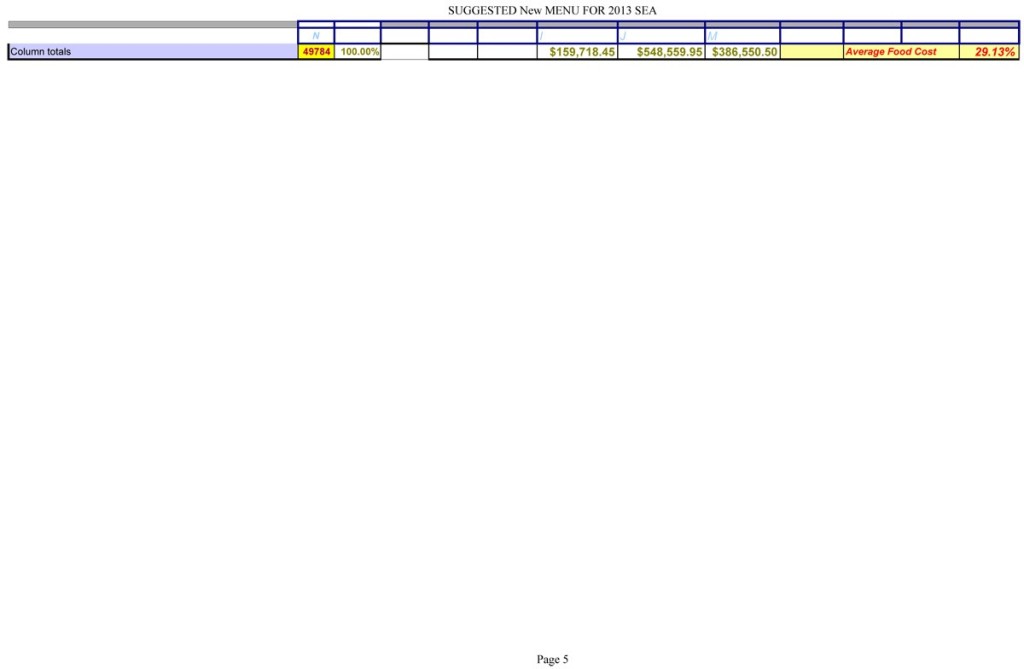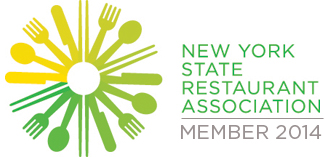
From Chef and Author Michael Bennett
Data that Can’t be Interpreted is Useless.
This might come as a surprise to some in the restaurant business but, having a POS and menu costing programs system in your restaurant will not answer your financial difficulties if the answers it gives you cannot be understood or the principal answers cannot be clarified and filtered down amongst the rank and file. It is the understanding of the data that is in front of you and the reformatting of the problematic Food Cost item, the menu’s problematic preparation or its’ retailing, that is the most important thing about understanding Food Cost in your restaurant. These three things I am going to try to get you to think about differently in this article.
This isn’t some growing trend or anything that hasn’t been done before, it is just common sense to create, promote and then re-numerate costs to achieve the correct profit in a business. It is a difficult obstacle that many in this business fail to think about after the glory days of the restaurant opening.
My Point Is This…
What are the correct PRIME costs for your restaurant? There isn’t one! Every menu seeks to provide a different level of profit and should be regulated by your customer base. I actually had an expert at this tell me he could turn my 60 percent Prime cost into an unbelievable 45 percent Prime cost menu without knowing a single thing about the eatery or the customer base. The customer base also reveals opportunities in what your profits could be. Your staff, if properly informed and managed, will funnel extended profits to the restaurant’s bottom line after you have engaged them regarding the role they must attain for success in their position.
Overlooking the obvious, if you are in the business district, your breakfast, lunch and happy hours should be your greatest concerns for efficiency in cost and timeliness of any menu. If you are a resort/vacation operation, then leisurely lunches, brunches and dinners are your priority. These totally differing spectrums of our business and what is needed to attain this business classification are the leading reasons that PRIME costs are different for every business.
It is very easy to say, and it has on many occasions, to have a million dollar restaurant business you have to start with two. It is 85 percent right on the money. 85 percent of first year restaurant business’s go out of business because this new venture is not their lifelong existence. It is a passing fad or it is a career change for many restaurateurs. I have seen it so often in my thirty years of working in restaurants. Everybody getting into this business should understand that you generally get back five cents on every dollar of revenue earned. If you happen to make more and are happy with these facts, then proceed onward toward your quest.
Did I Make a Point…
I hope I haven’t deterred you from reading the rest of this article. I wanted to be clear. This is a business and has to be operated like any other. Being an Artist, Host, a Dollar Hawk and Counselor to an entire staff is just the start of your audition to a restaurant guise.
I won’t go on about how a well-trained culinary staff will save you money. Or how a well-educated sales staff will help you make more profits but, I will restate these underlying ideals just to say that this has to be intact before you want to create additional profits. Later in this article I will go through my experiences with creating profitable menus from non-profitable ones. Being a back of the house kinda guy, I know that there are always challenges with artists and making profits. Artists always think the execution of the craft generates profit. The crafting of a beautiful menu will only succeed when the sales staff knows the proper way to professionally describe and sell additional high PROFIT MENU ITEMS to the customer along with their singular fundamental artistic entrée. This is where Menu Engineering comes into play. With uncloaked statistics from a proper Menu Engineering’s illumination and understanding, the expanding of the restaurant’s profitability with a staff debriefing of this information (in easy to understand directive from management to the sales staff), will shape and nurture your profitability.
Sales directives are unique to each business. A Ford dealership wants to sell more SUV’s because of the additional profit each sale generates. But, if this dealership is in an area of the country where gas mileage is of more importance to their customer base, then their offerings should include the lower horsepower, higher mileage smaller vehicles. It is the same for the restaurant business. If your restaurant is located in the Midwest, you are unlikely to offer fresh seafood from Florida. To do so would decrease customer base and limit affable options for your beef-centric consumer. So what has worked for me everywhere I have worked is to offer the customer what they want to eat, make rigorous and precise re-envisionment to my menu’s comparable offerings that are likened to the local competition and, to tell others about it through Media.
It all originates verbally through a professionally educated sales staff, that is directed to sell the most profitable items with the highly sought after and generally more costly artistic menu items. I will direct my management staffs to teach wine pairings and mix and match appetizer – entrée couplings to our Servers. “This Grouper is great with a pairing of Pinot Blanc because…..of this or that.” Edify the Servers; the more professional they seem to your customer, the more the customer will listen to their professional recommendations. If the Server knows why the grouper should be paired with this bottle of wine and, it actually works for the customer enjoyment, the customer will likely order another profit-driven bottle of wine from that Server the next time they come in.
A Server that is not offering a high-profit dessert item at the beginning of taking the order should be retrained to detail the impending mouthwatering temptations the customer should leave room for. To know what a Server should suggest, you have to first know which of items on your menu generate the greatest profit. Menu analysis is the way in which this is answered yet, first there is a beginning phase of this analysis.
In the Beginning…
As a Chef I knew that generating profits meant concise and constant repetition of the back of the house staff before the food exits the kitchen door. Grasping a deeper understanding of this synopsis, it is the correct analysis of each individual plate’s cost that is accurately recorded to find your precise profit.
This starts with butcher yield test and cutting sheets. To know what that grouper entrée portion really costs per portion, costs have to include losses from what is on the invoice when it walks through the back door of the kitchen, including portion trimming, preparation additives and cook-shrinkage of the recipe portion. Then one has to discern what is trending on the menu, through analyzing your menu mix and at what price range you can charge for the portion for each menu item.
Next is the edification of the sales staff. Once you have the profitability of each item on the menu, then you direct your staff to sell the more profitable items. When this system is paired with incentives and praise, it will always work to generate better profits over time.
Examples of Menu Analysis…
A Butcher’s yield sheet is the best way to calculate your individual portion cost. It should include what can be done with the trimmings and waste.
- Usable trim might be used in soup, fish cakes, etc…
- For this example, bones and head could be used for stock/sauce making.
- You will see the example starts at $8.95 a pound and being able to use a portion of the trimmings in another menu recipe, the portion cost is only raised to $10.12 per portion.
As this chart details that grouper the $8.95 dollars a pound is in reality a $10.12 a pound starting cost. This is a 17 percent loss in your profitability before you add ingredients needed to create a menu item.
As you will see the price for an entrée portion cannot be calculated from As Purchased (AP) price. After the entrée has been trimmed and scaled to portion size you can start the recipe costing. As long as the food items that you are going to add to this menu item are cost out with a butcher’s yield sheet like this one (that follows below), the rest of your menu analysis is a matter of adding up all the ingredient costs and plugging in the sales harvested from your POS system. I am not adding a recipe card here; we all know how to add.
- For ease of use, these individual recipe element cost sheets need to be updated all the time.
- From time to time these results have to be rescanned to check for any changes in the measured product result, as it is purchased and how it measures out from changes in any circumstances.
BEFORE and AFTER… The following is an example of how to use Menu Engineering to reformat your menu strategies. You will find that there are many things that a Menu Engineering sheet can teach.
- One is to see what possible profits can be established with sales training
- One of the most important in my view is finding an opportunity to turn a highly profitable, slow mover into a profit super star by training the sales staff to refocus to selling these items.
Look over the chart. Starting with the first column on the left:
- Item name.
- Number of items sold (from your POS system), you will see the menu mix is calculated by taking each individual item sold and comparing it to the total number of items on the menu.
- It is extremely important to get the right information for the right period of time and, to use this with correctly recorded comparable information in later analysis.
- To find the winners and losers (in sales) on the menu, this step has to be extremely accurate.
- Then the total cost of each recipe figured to the penny.
- Next are the menu prices column (that you are charging currently), these can and should be changed after this exercise.
- The next couple columns will total what you just in the previous columns multiplied by the number sold.
- The next three columns are the learning fragments that will need evaluation with a menu evolution eye.
- It is extremely important to get the right information for the right period of time and, to use this with correctly recorded comparable information in later analysis.
First Menu Eval 1
Explaining the Results…
- Where you see the “Star” your work is done on these menu items.
- Where you see “Dog” we have a problem.
- Where you see “Puzzle” and “Plowhorse” we have a lot of opportunities for profit enhancements.
- Puzzles are the easiest to figure out. These are profitable items yet aren’t being sold enough. To fix this, get the sales staff to push these items harder.
- Plowhorses need the most rational thought. These are items that are selling well yet need to be more profitable. So cutting portion size or raising prices are the easiest solutions.
CHANGED MENU
After analysis and adding better (in food cost) menu items, the restaurant’s Food Cost drops 3 percent. See the difference in menu food cost at bottom of the last page.
- You will notice I have added many new items to this menu. The menu was developed for a 600 seat restaurant with two separate well-equipped kitchens and enough staffing to accomplish this transition. That said let’s look at the details:
- The ownership didn’t want any of the (lower profit) house favorite menu items changed in any way. So the portion size (to save money) or the menu prices were not changed.
- All the new high profit appetizers and salads brought in a lot of 20 percent food cost items that brought the menu mix cost way down.
- Sandwich sales were always a big element of the entire day part, so adding higher profit sandwiches brought the menu a lower food cost and a diverse substantial menu category. These additions brought in an additional genre of customer. All new items were added using the same pantry foodstuffs that the old menu already used. So, added new (food) capital expenses were limited.
- Pastas of course were added to limit the sales in other moderately priced, high food cost menu choices. These additions brought in a new genre of customer as well.
- Besides the new entrees, the side dishes and desserts became a larger player on the written menu. It was seen that families bought into this ideal. They ordered the small plates for their fussy children that couldn’t find something they wanted on the other 90 percent of the menu.
- The next step in correctly identifying problems is to take sectional menu sales from the POS and then only evaluate each section of the menu.
- As an example, only evaluating appetizers. Or, evaluate salads and appetizers compared to your entrees to see if profitability will rise for the restaurant if servers were led to push sales in the higher profit items (the appetizers).
- The menu mix is important in this step. Seeking the perfect combination for sales in appetizers paired with entrees could be more to do with adjusting the menu’s prices.
Changed menu after adjustments 1
Changed menu after adjustments 2
Changed menu after adjustments 3
Changed menu after adjustments 4
Changed menu after adjustments 5
People to Help You… If you Google Menu Analysis or Menu Engineering, you are going to find a lot of companies that will help you pilot your menu to profitability. There are things you can do for yourself. It takes time, diligence and a few trial and error menuing revisions. After your third menu generation, your evaluations, revisions and migration will lead to a more profitable scheme and will soon set your restaurant up for profitability for the upcoming season. For additional information about menu formatting and profitability please email me here: foodbrat@gmail.com or read more about this article’s author at FoodBrats.com
